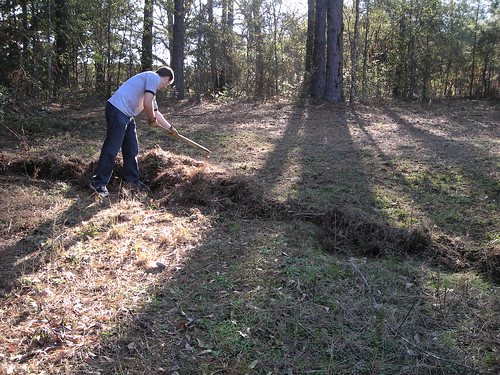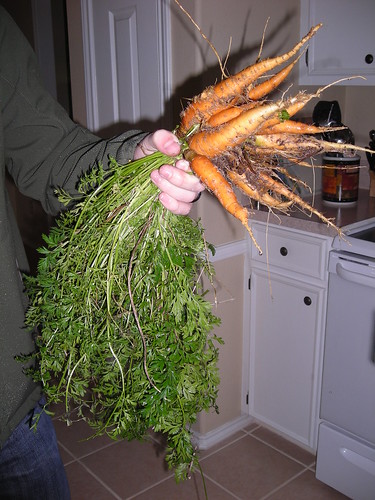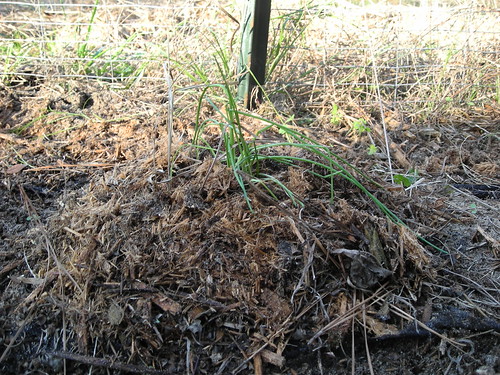I decided, instead, that I would do a water garden in a pot. A local garden center, Dragonfly, has an outstanding selection of suitable pots and the various accessories necessary to turn them into a water garden. This will be a perfect addition to fulfill the requirements of the certification program's need for water. The water garden will have aquatic plants growing in it, and I would hope that it would eventually attract breeding amphibians.
Part of the certification program (not a required portion, but a suggested portion) involves reducing or eliminating nonnative turfgrass lawn spaces. I already had a part of the back yard that was beginning to naturally seed with some natives (mostly little bluestem) and I decided that I would help the area along by planting a mix of native grass seeds. I found a place that deals with a lot of Texas native plants, Native American Seed, and found that their Eastern Savannah Grass Mix suits my area perfectly. It has a great variety of grasses:
Big Bluestem
Bushy Bluestem
Eastern Gamagrass
Broomsedge Bluestem
Indiangrass
Little Bluestem
Prairie Wildrye
Virginia Wildrye
Sideoats Grama
Switchgrass
Purpletop
Sand Dropseed
Sand Lovegrass
I also purchased some American beautyberry seeds from them. I'm attempting to germinate some of them indoors because I have a particular place I want them to grow. The rest I plan to direct-sow in the woods after the last frost. I got a bunch of wildflowers from both them and Baker Creek that I plan to plant in various locations in my front and backyards.

Fun prepping the seed bed for the native grasses.
After talking to the wife, I've decided I'm also going to eliminate some lawn in the front yard in favor of some native plantings. This area I'm going to be a little more specific about what goes where. Native American Seed sells rootstock of a variety of grasses and flowers and I think I'm going to go this route for some things. In particular, I have my eye on the big bluestem, indiangrass, and gayfeather rootstocks. I'll probably also put down their Caddo Mix wildflowers here.
I do plan to maintain some section of lawn grass, but I think I'd like to plant buffalograss, a native turf grass, in the remaining portions of lawn. It does really well on low rainfall. Even though the area does get good annual precipitation, it's a VERY droughty climate. Last summer, we went a full 2-3mo without a single drop of rain, so the more drought-hardy my plantings, the better off they will be.
After talking to the wife, I've decided I'm also going to eliminate some lawn in the front yard in favor of some native plantings. This area I'm going to be a little more specific about what goes where. Native American Seed sells rootstock of a variety of grasses and flowers and I think I'm going to go this route for some things. In particular, I have my eye on the big bluestem, indiangrass, and gayfeather rootstocks. I'll probably also put down their Caddo Mix wildflowers here.
I do plan to maintain some section of lawn grass, but I think I'd like to plant buffalograss, a native turf grass, in the remaining portions of lawn. It does really well on low rainfall. Even though the area does get good annual precipitation, it's a VERY droughty climate. Last summer, we went a full 2-3mo without a single drop of rain, so the more drought-hardy my plantings, the better off they will be.



